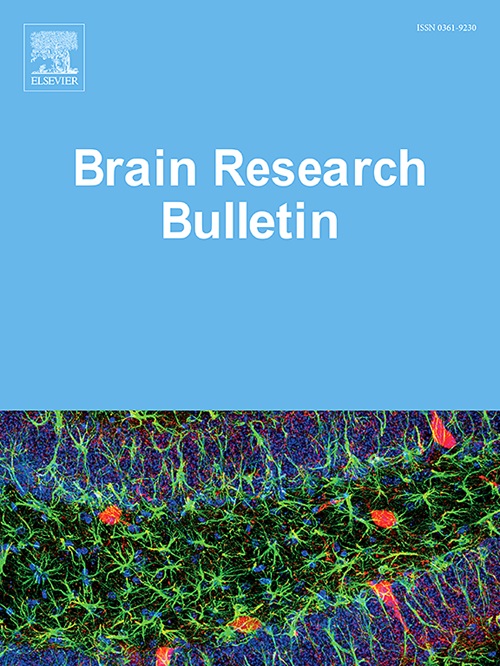Age-related changes in the vestibulothalamic pathway: Association with balance ability and subjective visual vertical of vestibular function
IF 3.5
3区 医学
Q2 NEUROSCIENCES
引用次数: 0
Abstract
Introduction
The thalamus regulates various sensory information to each related brain area. The vestibular nucleus transmits information of motor control to the thalamus regulating coordination function. The vestibulothalamic tract (VTT) is a neural pathway between the vestibular nucleus and thalamus that processes vestibular information for postural balance and spatial perception. Therefore, this study analyzed ipsilateral VTT to compare the neural pathway and the differences in vestibular and balance functions according to aging.
Methods
Eleven elderly and 12 young healthy adults were recruited. This study measured subjective visual vertical (SVV) for vestibular function and body sway during one-leg standing. The ipsilateral VTT were reconstructed to investigate changes of neural pathway between two groups using diffusion tensor imaging.
Results
Track volume of left and right VTTs was significantly more in the young healthy adults. In eyes-open (EO) condition during one-leg standing, the body sway demonstrated significant differences between two groups. In the eyes-closed (EC) condition, the degree of hip sway was decreased in the young healthy adults. In the EO condition, the body sway except for antero-posterior direction was significantly correlated with VTT. Meanwhile, in the EC condition, hip sway and all values of body sway were negatively correlated with VTT. In addition, the VTT revealed a negative correlation with SVV.
Conclusions
The tract volume of VTT and static balance decreased according to aging. The changes of VTT also affected verticality perception and static balance. Therefore, the study could be helpful in providing the data for patients with thalamus or vestibular injury.
前庭丘脑通路的年龄相关变化:与前庭功能的平衡能力和主观视觉垂直相关。
丘脑调节各种感觉信息到每个相关的大脑区域。前庭核向丘脑传递运动控制信息,调节协调功能。前庭丘脑束(vestibulothalamic tract, VTT)是前庭核和丘脑之间的神经通路,处理前庭信息以实现姿势平衡和空间感知。因此,本研究对同侧VTT进行分析,比较神经通路以及前庭和平衡功能随年龄的差异。方法:招募11名老年人和12名年轻健康成人。本研究测量了单腿站立时前庭功能和身体摇摆的主观视觉垂直(SVV)。应用弥散张量成像技术重建两组同侧VTT,观察两组间神经通路的变化。结果:年轻健康成人左、右心室径迹体积明显增加。在单腿站立睁眼状态下,两组之间的身体摇摆有显著性差异。在闭眼(EC)条件下,年轻健康成人的髋部摆动程度降低。在EO条件下,除前后方向外的身体摇摆与VTT显著相关。同时,在EC条件下,髋部摆动和身体摆动的所有值与VTT呈负相关。此外,VTT与SVV呈负相关。结论:随着年龄的增长,VTT的体积和静态平衡逐渐减小。VTT的变化也影响了垂直感和静态平衡。因此,本研究可能有助于为丘脑或前庭损伤患者提供数据。
本文章由计算机程序翻译,如有差异,请以英文原文为准。
求助全文
约1分钟内获得全文
求助全文
来源期刊

Brain Research Bulletin
医学-神经科学
CiteScore
6.90
自引率
2.60%
发文量
253
审稿时长
67 days
期刊介绍:
The Brain Research Bulletin (BRB) aims to publish novel work that advances our knowledge of molecular and cellular mechanisms that underlie neural network properties associated with behavior, cognition and other brain functions during neurodevelopment and in the adult. Although clinical research is out of the Journal''s scope, the BRB also aims to publish translation research that provides insight into biological mechanisms and processes associated with neurodegeneration mechanisms, neurological diseases and neuropsychiatric disorders. The Journal is especially interested in research using novel methodologies, such as optogenetics, multielectrode array recordings and life imaging in wild-type and genetically-modified animal models, with the goal to advance our understanding of how neurons, glia and networks function in vivo.
 求助内容:
求助内容: 应助结果提醒方式:
应助结果提醒方式:


